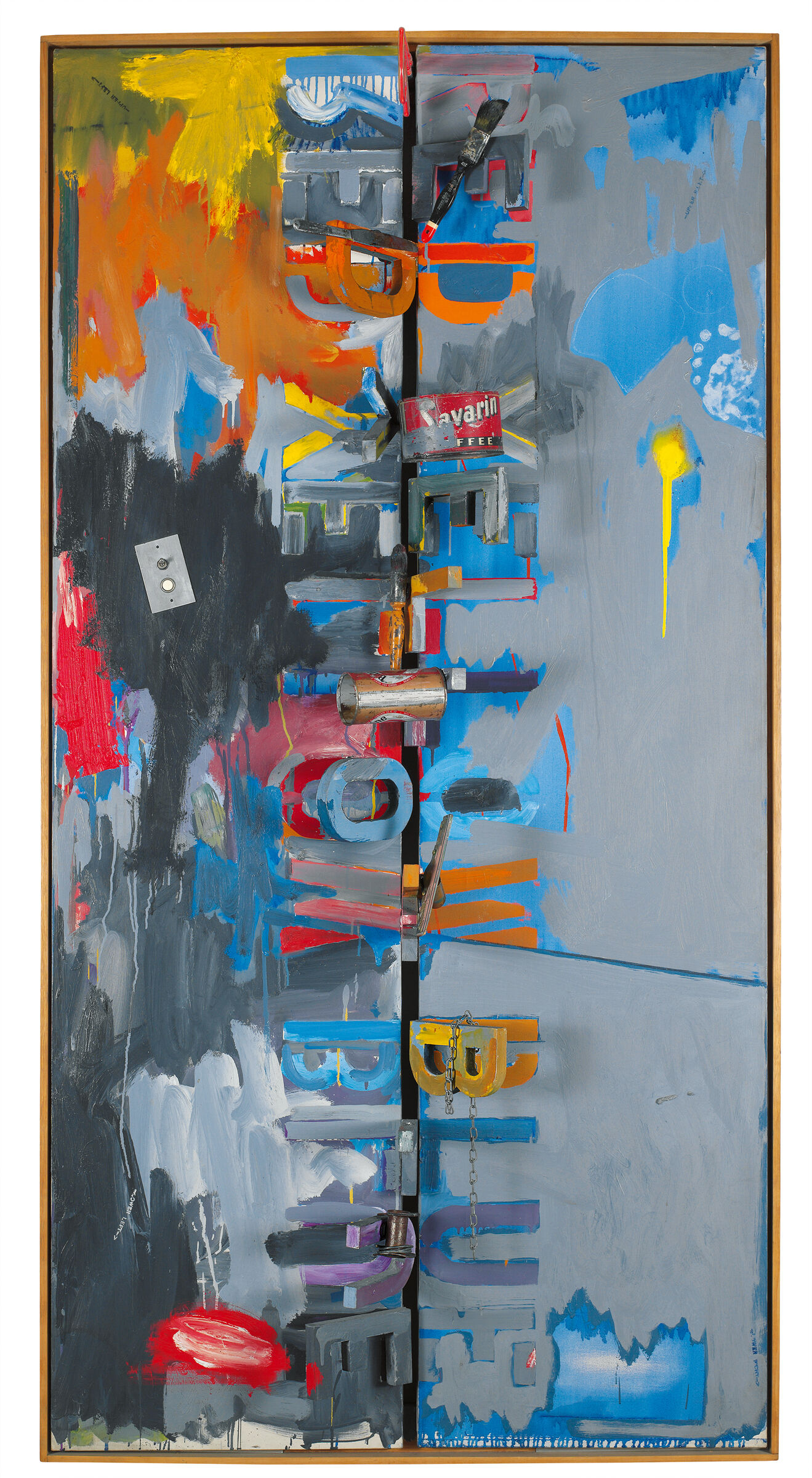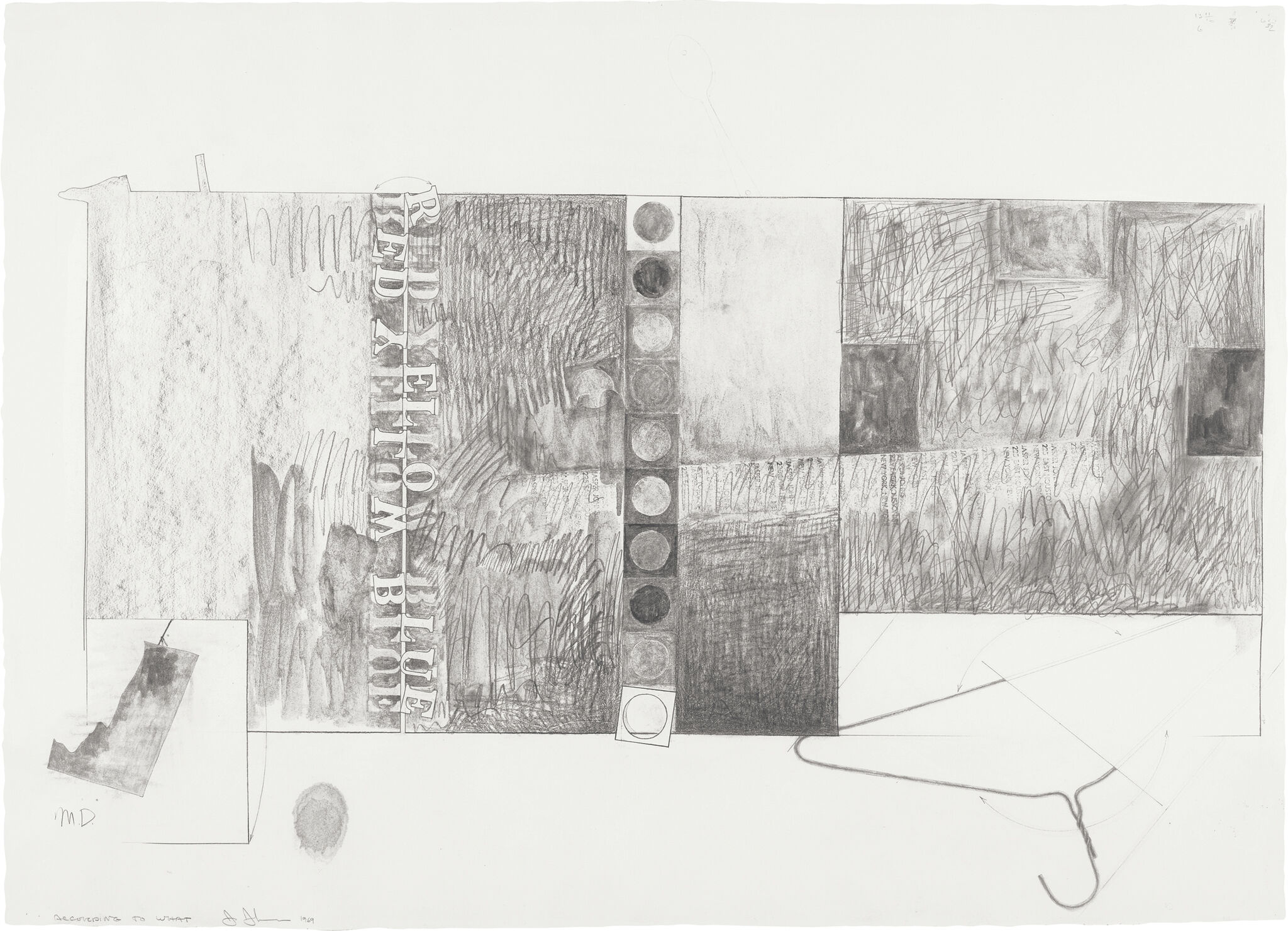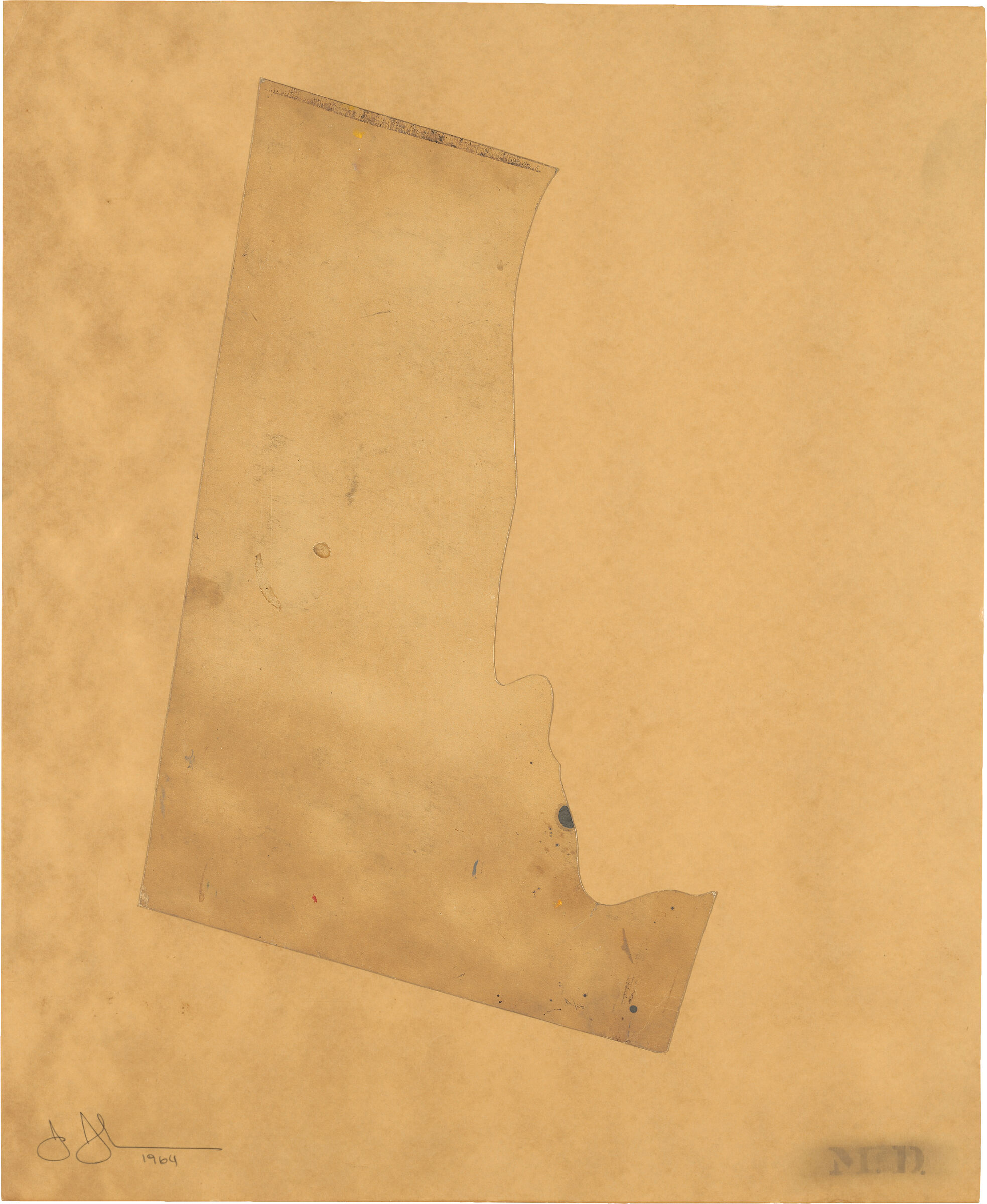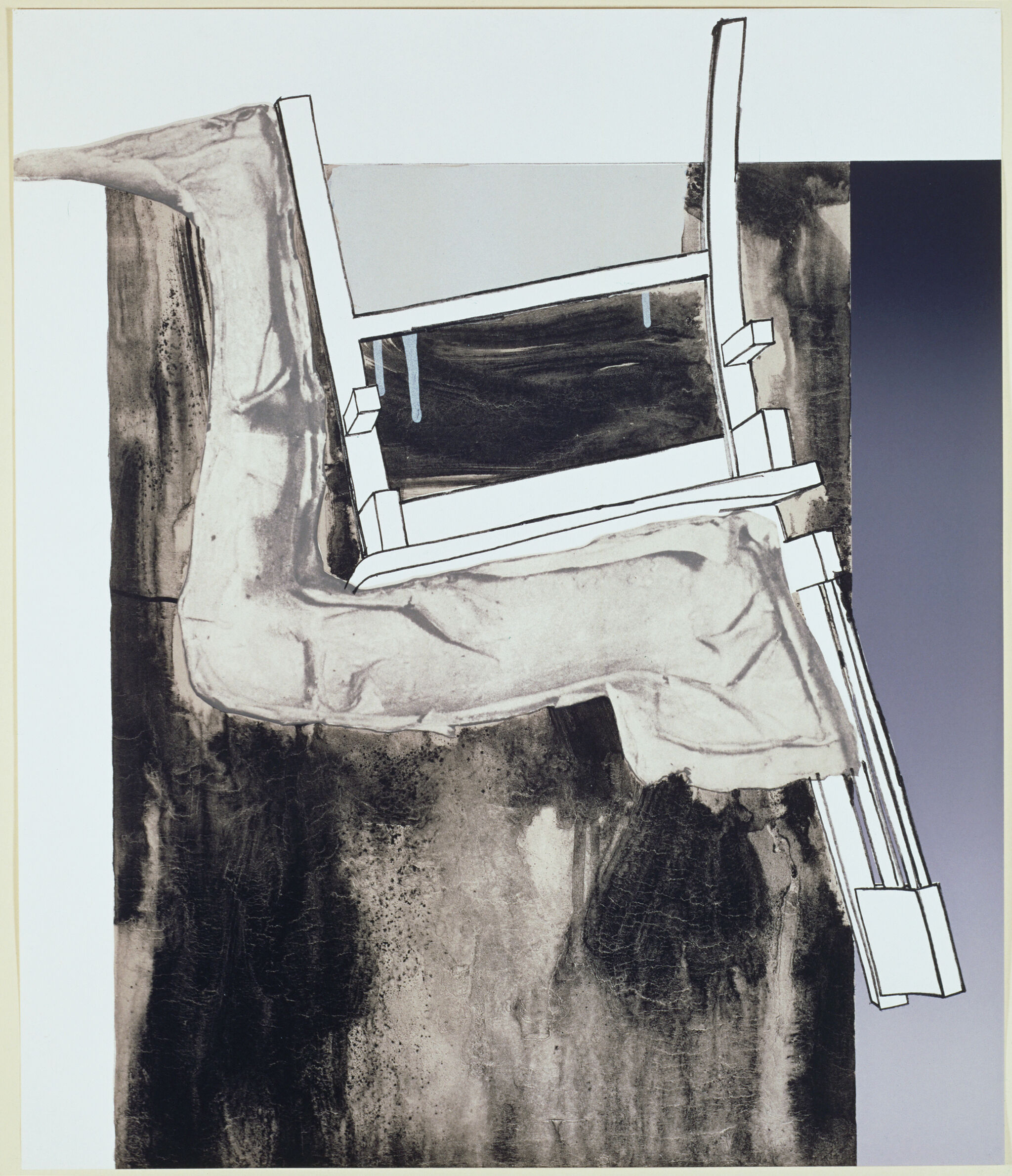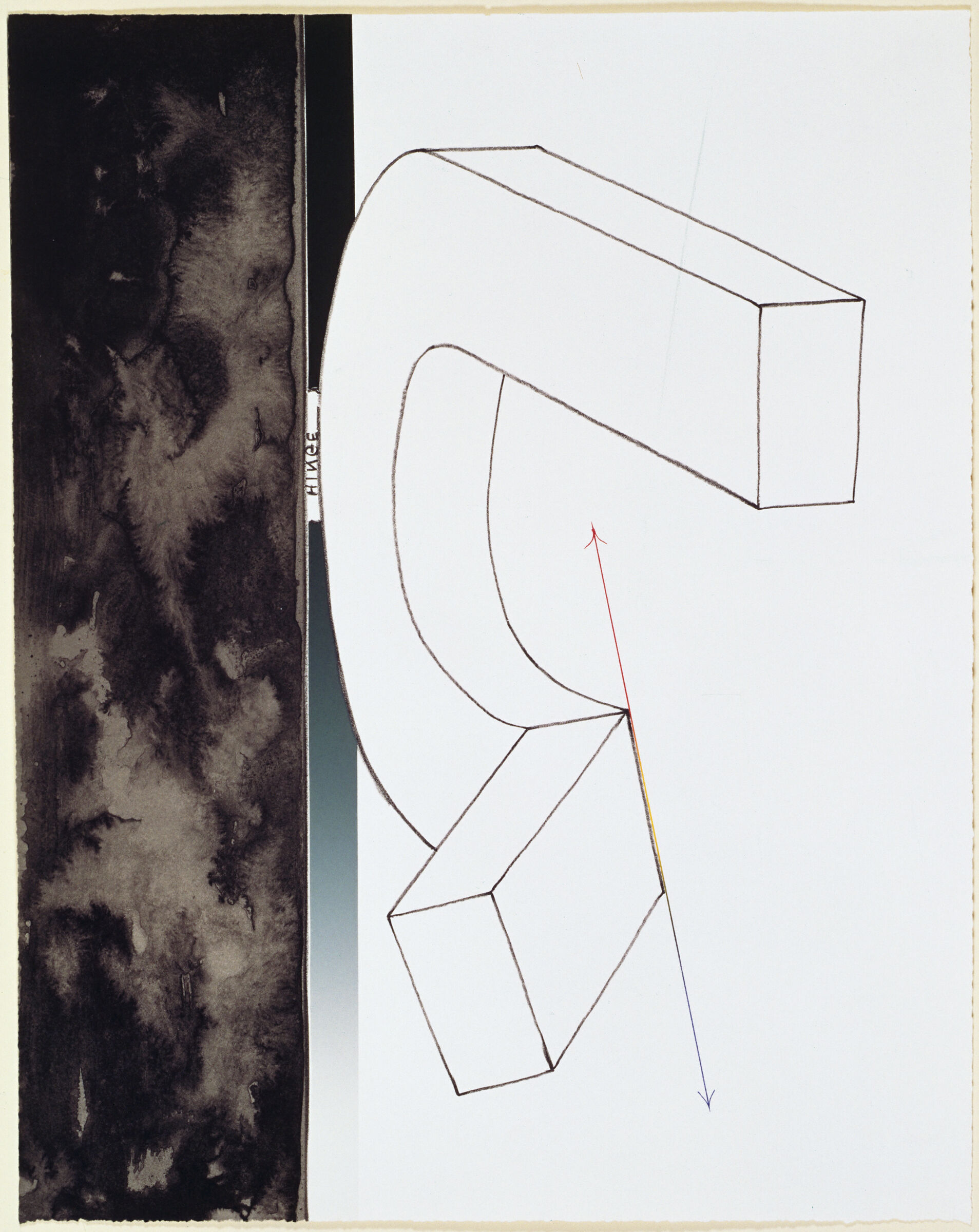Jasper Johns: Mind/Mirror | Art & Artists
Sept 29, 2021–Feb 13, 2022
Jasper Johns: Mind/Mirror | Art & Artists
According to What, 1964
5
In the early 1960s, Jasper Johns embarked on a new type of large-scale painting that was both synthetic and generative. While most of his prior works had focused on a singular image or concept, he started compiling multiple elements and techniques to create sprawling, self-referential mash-ups. Yet these paintings functioned not only as provisional anthologies but also as fruitful springboards for future works, sometimes in other mediums.
This gallery features a constellation of objects centered around the monumental According to What (1964), in order to illuminate Johns’s obsessive process of working into and out of a key painting. The expansive canvas gathers incidents found in earlier ones, some on view here, such as hinged lettering and flat rectangles of primary color embedded amid splashy brushwork. Many of the details of According to What and its rebus-like structure pay homage to Marcel Duchamp, whose silhouette hides behind a latched panel at the bottom of the stretcher and who made similarly puzzling objects to decode. For Johns, the French-born artist was a powerful role model who moved art “into a field where language, thought, and vision act upon one another.” Johns learned of Duchamp’s work when critics compared his early flags and targets to the found objects of the elder artist’s famous readymades. The two met in New York in the 1960s and Johns later collected some of Duchamp’s work, which became a lifelong source of inspiration.
The corresponding gallery at the Philadelphia Museum of Art focuses on Untitled, 1972.

